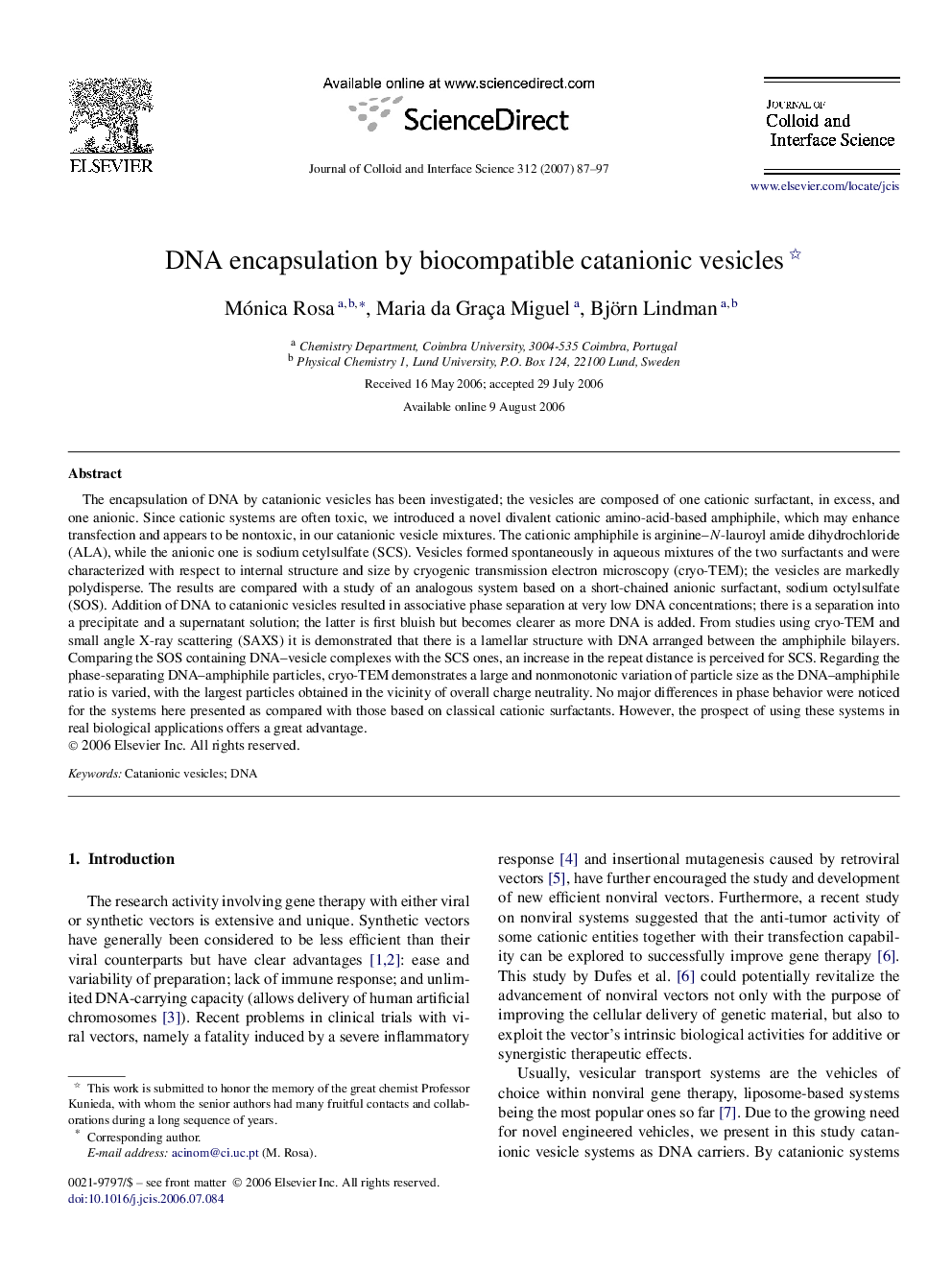| کد مقاله | کد نشریه | سال انتشار | مقاله انگلیسی | نسخه تمام متن |
|---|---|---|---|---|
| 612692 | 880704 | 2007 | 11 صفحه PDF | دانلود رایگان |

The encapsulation of DNA by catanionic vesicles has been investigated; the vesicles are composed of one cationic surfactant, in excess, and one anionic. Since cationic systems are often toxic, we introduced a novel divalent cationic amino-acid-based amphiphile, which may enhance transfection and appears to be nontoxic, in our catanionic vesicle mixtures. The cationic amphiphile is arginine–N-lauroyl amide dihydrochloride (ALA), while the anionic one is sodium cetylsulfate (SCS). Vesicles formed spontaneously in aqueous mixtures of the two surfactants and were characterized with respect to internal structure and size by cryogenic transmission electron microscopy (cryo-TEM); the vesicles are markedly polydisperse. The results are compared with a study of an analogous system based on a short-chained anionic surfactant, sodium octylsulfate (SOS). Addition of DNA to catanionic vesicles resulted in associative phase separation at very low DNA concentrations; there is a separation into a precipitate and a supernatant solution; the latter is first bluish but becomes clearer as more DNA is added. From studies using cryo-TEM and small angle X-ray scattering (SAXS) it is demonstrated that there is a lamellar structure with DNA arranged between the amphiphile bilayers. Comparing the SOS containing DNA–vesicle complexes with the SCS ones, an increase in the repeat distance is perceived for SCS. Regarding the phase-separating DNA–amphiphile particles, cryo-TEM demonstrates a large and nonmonotonic variation of particle size as the DNA–amphiphile ratio is varied, with the largest particles obtained in the vicinity of overall charge neutrality. No major differences in phase behavior were noticed for the systems here presented as compared with those based on classical cationic surfactants. However, the prospect of using these systems in real biological applications offers a great advantage.
Figure optionsDownload as PowerPoint slide
Journal: Journal of Colloid and Interface Science - Volume 312, Issue 1, 1 August 2007, Pages 87–97